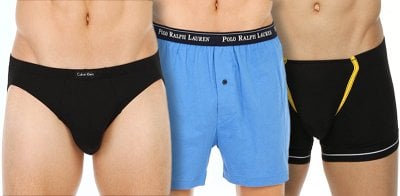Nelson Vergel
Founder, ExcelMale.com

Choice of underwear and male fecundity in a preconception cohort of couples
JO - Andrology
SN - 2047-2927
Summary
Our objective was to investigate the relationship between male underwear-type worn during daytime/bedtime and male fecundity as measured by semen quality and time-to-pregnancy. We used data from a prospective preconception cohort conducted in 16 counties in Michigan and Texas, USA. 501 couples were enrolled and followed for 12 months of trying, which facilitated capture of time-to-pregnancy (in cycles), 6-cycle conception delay, and 12-month infertility. Male partners provided semen samples via in-home collection for next-day semen analysis comprised of 35 semen quality endpoints.
At enrollment, men provided information on type of underwear worn during daytime and bedtime and were classified into 6 categories by underwear choice (n = 491):
(i) briefs day/night, (ii) boxer-briefs day/night, (iii) boxers day/night, (iv) briefs day and boxers/none at night, (v) boxer-briefs day and boxers/none at night, (vi) boxers day and none at night.
473 (96%) men had semen analysis performed.
Men switching from their usual daytime underwear to boxers/none for bed (groups 4, 5, 6) had the most evidence of change in semen quality endpoints (10 of 11 differences) relative to men wearing briefs day/night (group 1). Group 4 men had lower percent of sperm with coiled tail , higher percent round, number of immature sperm , and amplitude head displacement . Group 5 men had higher sperm head perimeter, amplitude head displacement , percent cytoplasmic droplet and high DNA stainability . After false discovery rate control, no differences remained significant. No significant differences in time-to-pregnancy, conception delay, or infertility were observed. In summary, male underwear choice is associated with few differences in semen parameters; no association with time-to-pregnancy is observed providing reassurance to couples attempting pregnancy.















